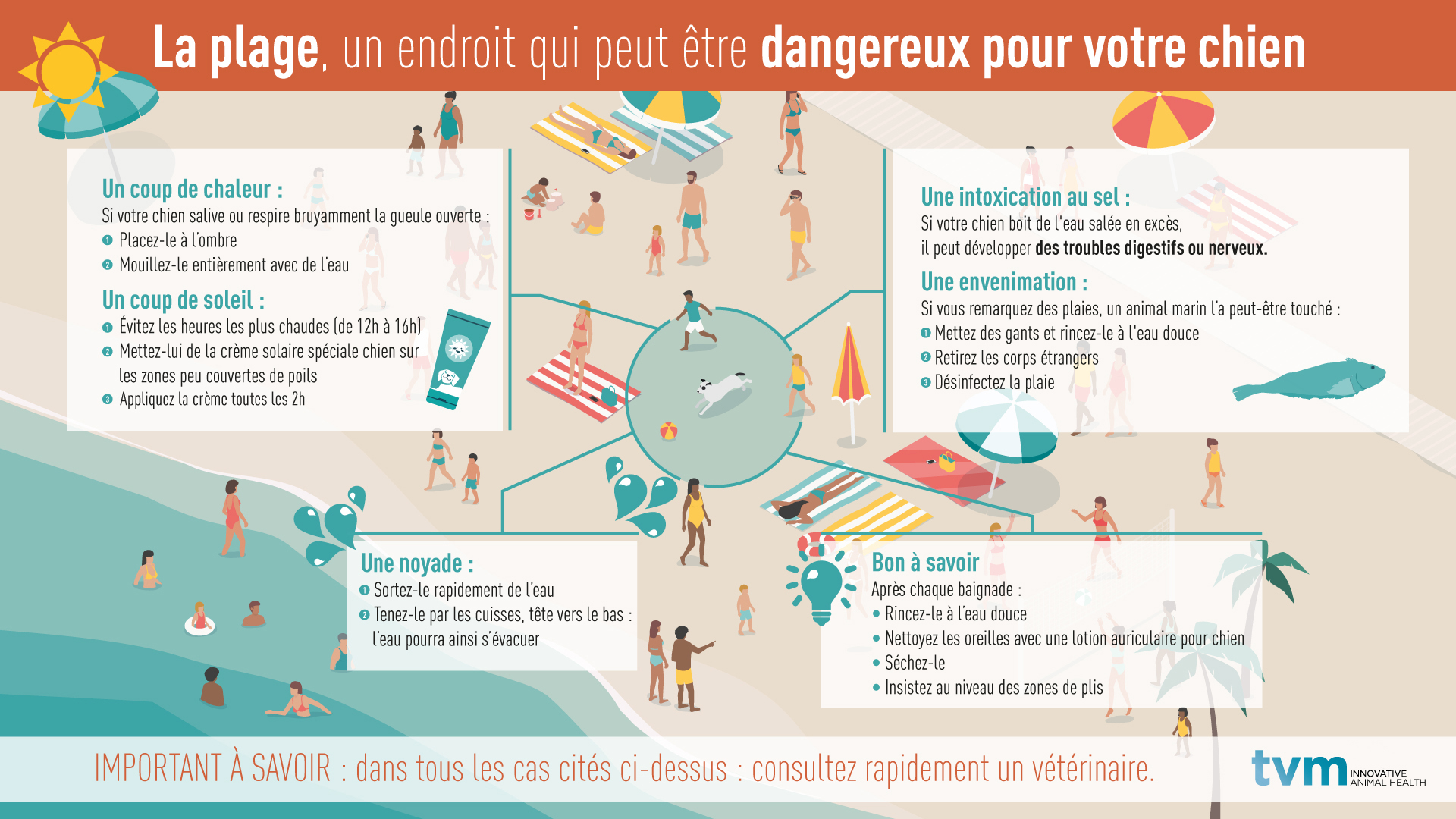Your dog and the summer heat
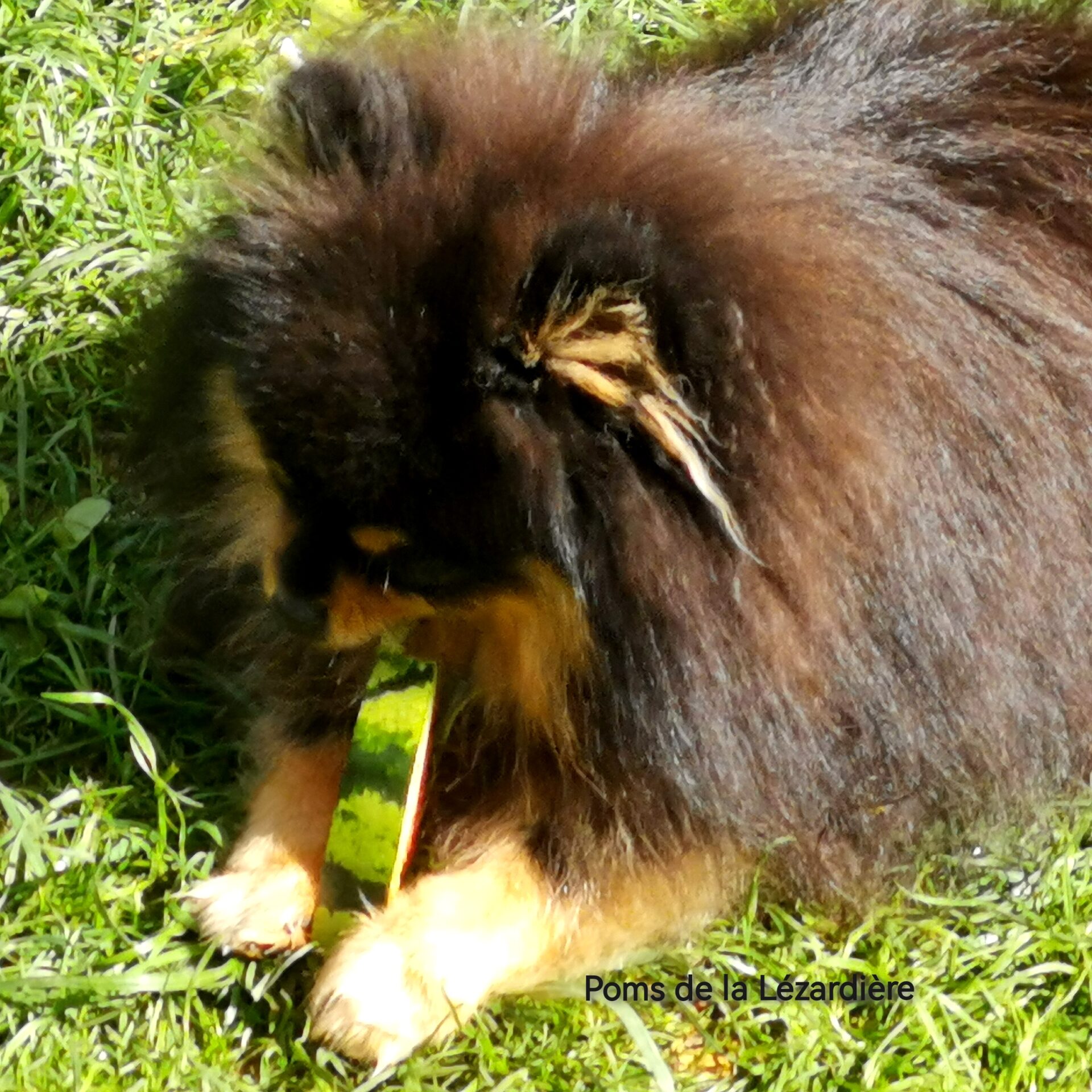

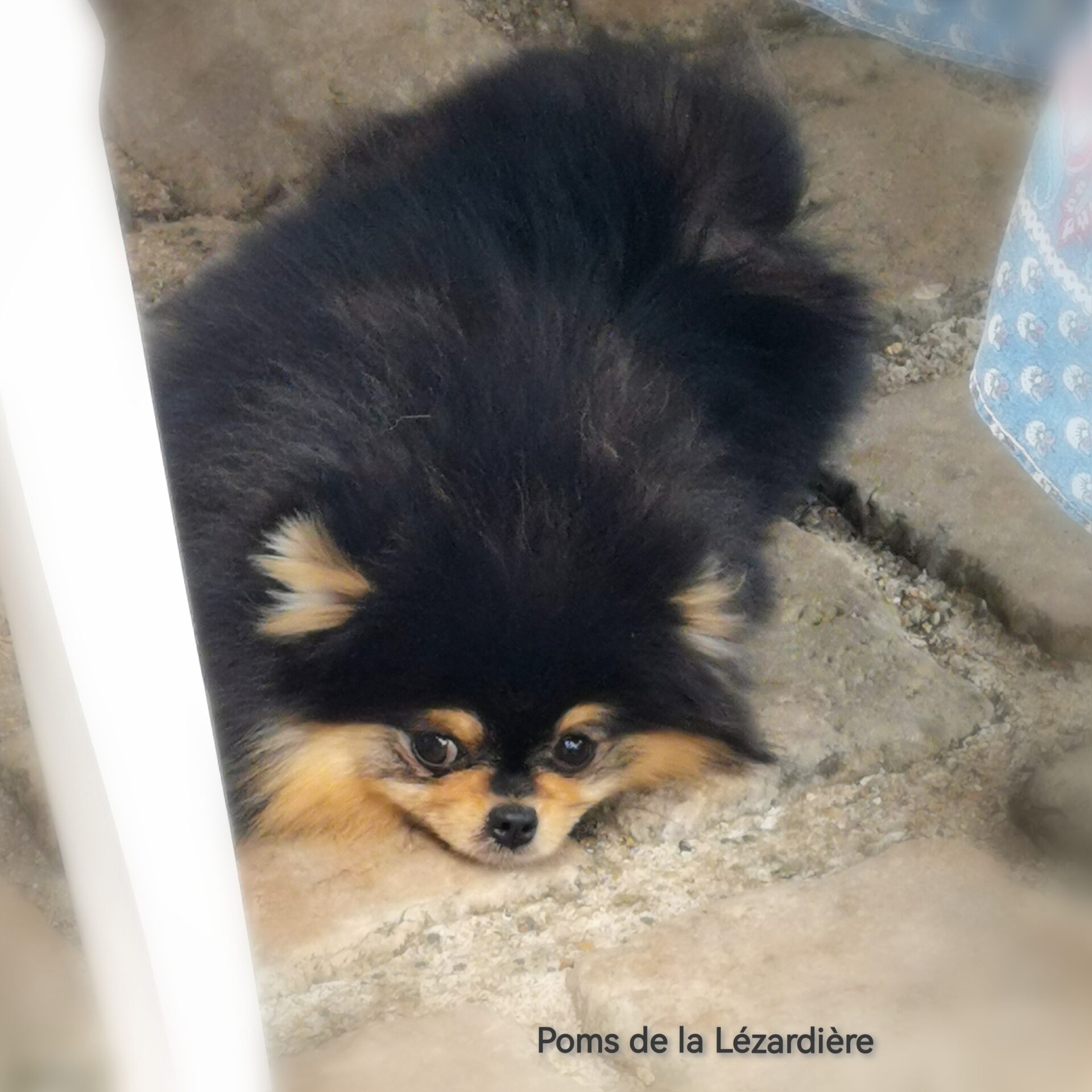
Beware of temperatures
Temperatures below 7℃ or above 32℃ are very difficult for a dog not properly protected.
When it’s too cold, your pet can become hypothermic.
When it is too hot, he risks heat stroke.
Heat stroke :
Signs :
-The skin feels warm to the touch,
-vomiting or hypersalivation,
-inhales quickly,
-respiratory distress,
-coordination disorders,
-faints or loses consciousness.
What to do :
-Put your dog in the shade, in a cool room.
-Try to cool the head and the rest of the body with cool (not cold) water, ice packs (in a cloth) or wet towels.
-When your pet starts to feel better, offer him some water to drink (small amounts at a time).
-Do not immerse your pet in water to cool it down (do not hose it down with cold water) as this would cool it down too quickly and could lead to serious complications (heat shock).
-Call the vet.
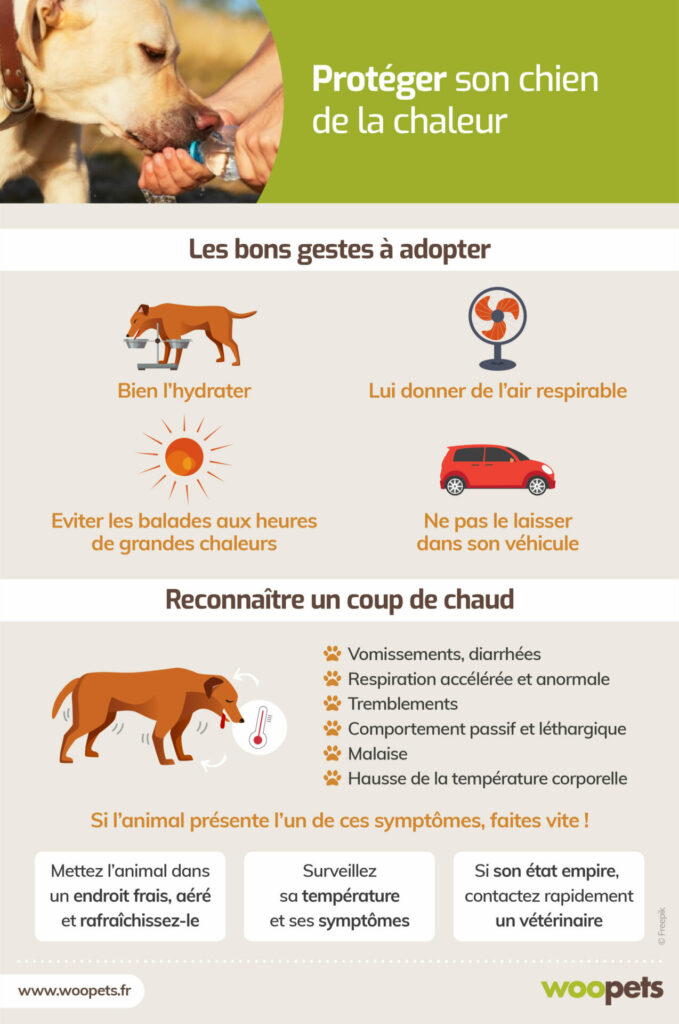
Let’s keep it cool
Choose a place with plenty of shade.
If it is warmer outside than inside,keep it inside.
Shutters and windows closed during the day and open at night.
Take it out in the morning and in the evening for a short walk.
During the day, only take him out for a few minutes for his needs.
If you absolutely must go out in the middle of the day, or even in the evening on tarmac (which will still be very hot) put on your dog’s slippers.
Always take a water bottle with you to keep him hydrated.
Water at will
How to avoid dehydration :
-Your dog always has fresh drinking water available. Avoid cold water which is more likely to cause stomach cramps. Prefer room temperature water.
In summer and winter, your dog can become dehydrated quickly, but not for the same reasons.
In the summer, when the temperature is too high, dogs run the risk of overheating.
Dogs sweat little and only through the sweat glands between their pads. On the other hand, the dog manages to cool itself by panting, which allows it to evacuate a lot of warm and humid air and to let in cooler air.
This loss of heat in the form of water can lead to dehydration if they cannot drink to compensate.
In winter, the animal may also become dehydrated, although this may seem strange to you.
If the outside temperature is low, the dog must burn more energy than usual to maintain its normal body temperature. This process consumes a lot of water.
How to tell if your dog is dehydrated ?
Signs :
-Your pet is particularly thirsty and is looking for a drink,
-Your eyes may feel dry and sunken in,
-Her skin loses its elasticity,
-he has less appetite,
-His mouth and nose look dry,
-He is vomiting, his gums are getting very dry, he seems down.
-Then the pulse becomes weak, the gums and mucous membranes turn a deep red colour (shock) and are sticky.
-Weakness, shivering, apathy and unconsciousness; in extreme cases they may die.
What to do :
-give him water
-Call the vet for help if you suspect dehydration and your pet does not improve after drinking fresh water.
Your dog is eating less, this is perfectly normal. Don’t try to get him to eat all or even half his food, as long as he drinks and eats a little, everything is fine.
In moderation, you can give watermelon and cucumber, which are very rich in water.
Pads
During hot weather, both dogs and cats can burn their paw pads.
Be sure to check the pads after each walk, especially if you notice any lameness, reluctance to walk, or if your dog licks them more than usual.
In winter, the health of your pet’s pads is just as important. Snow removal salt or de-icing products deposited on the road can be particularly irritating for the pads. Remove pieces of snow stuck in the hair, reinforce the pads with tanning products (in ointments) which reduce the risk of chapping.
Do not hesitate to put on slippers against the heat as well as against the cold.
The ground:
Press your hand against the hot asphalt for 7 seconds to see if it is too hot. You will know whether it is pleasant to walk or not.
In full sun, no wind and low humidity, you can use the table below:
Outdoor temperature: 25° C = asphalt temperature: 51.6° C
Outdoor temperature: 30° C = asphalt temperature: 57.2° C
Outdoor temperature: 30.5°C = asphalt temperature: 61.7°C
Source: J. Berens – Thermal contact burns from streets and highways. American Medical Association Journal.
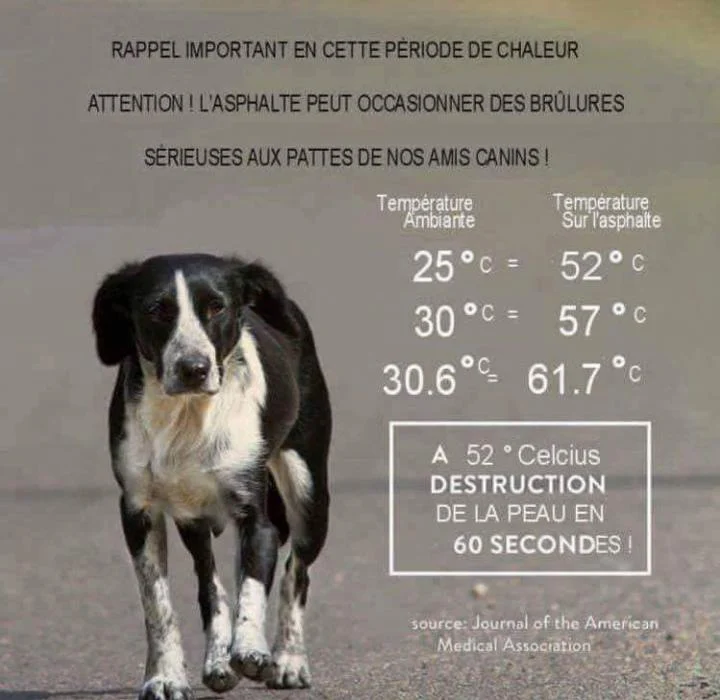
Eyes
The dog sees the world around it in very few colours. This is due to the nature of its cones, the cells of the retina responsible for colour perception.
The dog’s retina contains only two types of cones, compared to three in humans, which considerably reduces the spectrum of perceived frequencies.
The dog therefore perceives a dull image with very little colour and low contrast. Some colours, such as red and green, are not even differentiated by the dog’s retina.
On the other hand, dogs are very sensitive to light, 5 times more so than humans. The dog can therefore see well in the dark. On the other hand, strong light is very annoying and sometimes causes disorientation.
To protect the eyeball from various aggressions, the best and least restrictive protection is dog glasses.
Dr. Steven ROBERTS, American veterinarian and specialist in veterinary ophthalmology has enabled the democratisation of these dog protection systems.
After seeing many cases of chronic superficial keratitis, this veterinarian quickly established a relationship between the onset of this disease and the aggression of external elements such as strong light, wind and dust. The idea of developing a physical barrier for protection quickly became apparent. Dog glasses have been around for a long time, but until now have been reserved for intervention and military dogs.
The cornea is the natural barrier of the eye, but it remains fragile. Dog goggles are a really effective eye protection against external agents.
Rex Specs, the dog eyewear brand, has put all its efforts into the acceptance of the device by dogs.
Thus, the models are offered in 6 different sizes, suitable for all sizes of dog breeds. The glasses are light and easy to put on your pet.
Several lenses are available, interchangeable depending on the weather conditions. Transparent glass can be used on a daily basis for simple wind and dust protection. In winter sports, mirror glass offers real protection against UVA and UVB rays. High light levels are a factor in aggravating the symptoms of keratitis. Only glasses can effectively protect the eyes.
Hairs
During the summer, brush your dog regularly to remove dead hair and allow the skin to breathe better.
Be careful not to cut the hair or shave your dog (especially with double-coated dogs, as this will interfere with hair growth (sparse or missing hair, different texture, etc.).
This won’t help your dog stay cooler – quite the opposite!
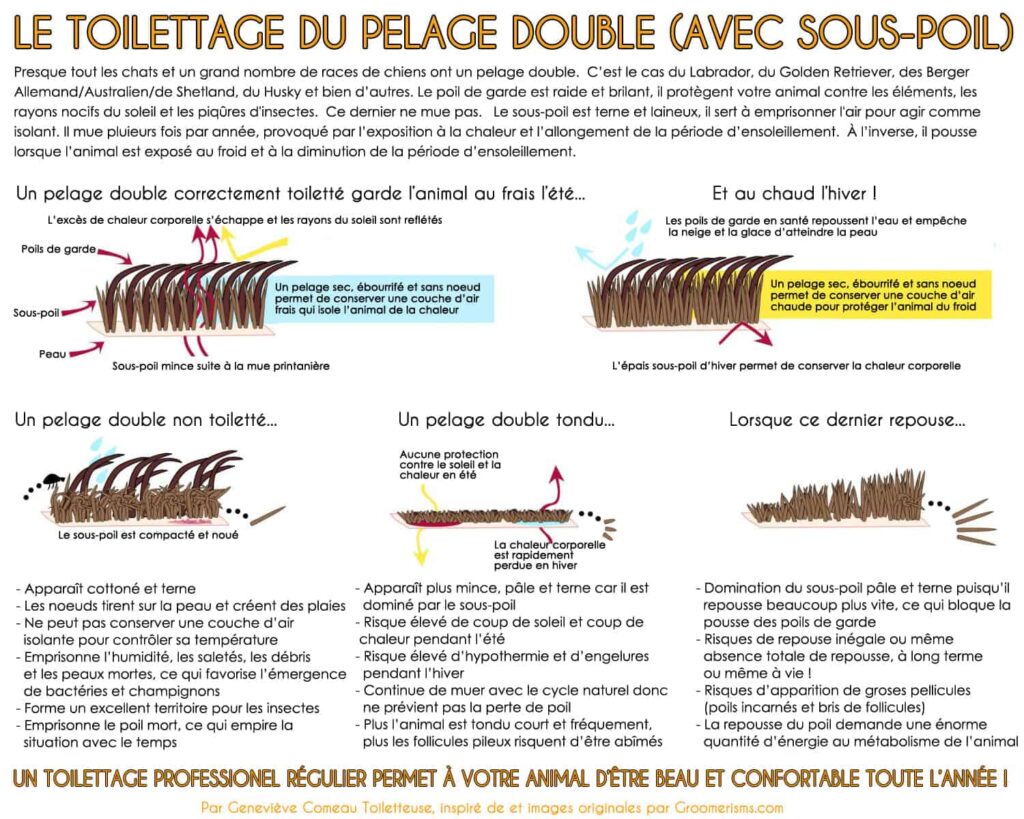
German Spitzes are double-coated dogs.
The first layer, the undercoat, is fluffy, fine and short. (This is the layer that the animal loses during the moult ![]() ). This layer serves to trap air and is insulating for the dog. It keeps warm in winter and cool in summer.
). This layer serves to trap air and is insulating for the dog. It keeps warm in winter and cool in summer.
The second layer of hair, the top layer, is made up of guard hairs that do not shed. It protects your pet from the sun’s harmful rays, the weather and insect bites.
“When air currents pass through this insulating layer where humidity is trapped, it will have an effect a bit like air conditioning, so it will help reduce body temperature,” says Dr Sauvé (Université de Montréal).

Temperature differences: shaved and unshaven hair.
Ice cubes
The Kennel Club, the UK’s largest organisation dedicated to the health, welfare and training of dogs, denies the claim that giving your dog ice cubes is dangerous:
“For years there have been rumours circulating on social media that giving a dog ice can trick the body into actually warming up, thus increasing the risk of heat stroke. This rumour is untrue and has been denied by vets.”
Battersea Animal Rescue Centre in England, formerly known as Battersea Dogs & Cats Home, has a recipe on its website for dog-friendly ice lollies: “not only will your dog absolutely love them, but it’s also a great way to help keep him cool on a hot day”.
Similarly, the RSPCA (the UK’s equivalent of 30 million friends) includes making frozen treats or adding ice cubes to a dog’s water bowl in its list of tips for caring for pets during summer or hot weather.
In France, the website 30 millions d’amis has an article on the use of frozen foods during the summer. Written under the supervision of Dr Geraldine Blanchard, the use of a large ice cube is mentioned. In this case,the ice ballis placed in a container to be licked.
However, it is necessary to use ice cubes of the appropriate size. The dog must be made to want to lick it, which allows the blood vessels in the tongue to cool. This allows the body to refresh itself, as dogs perspire mainly through their tongue.
Ice cubes should not be swallowed to avoid the risk of choking.
Be aware that eating very cold food can also lead to diarrhoea.
Several posts on Facebook, which have been shared thousands of times (without any verification) feature a text claiming to be from a vet who recently experienced the death of a dog. This alert is widely publicised in France and England.
What is it really like? Is it dangerous to give ice cubes to a dog?
Read the article below
Car
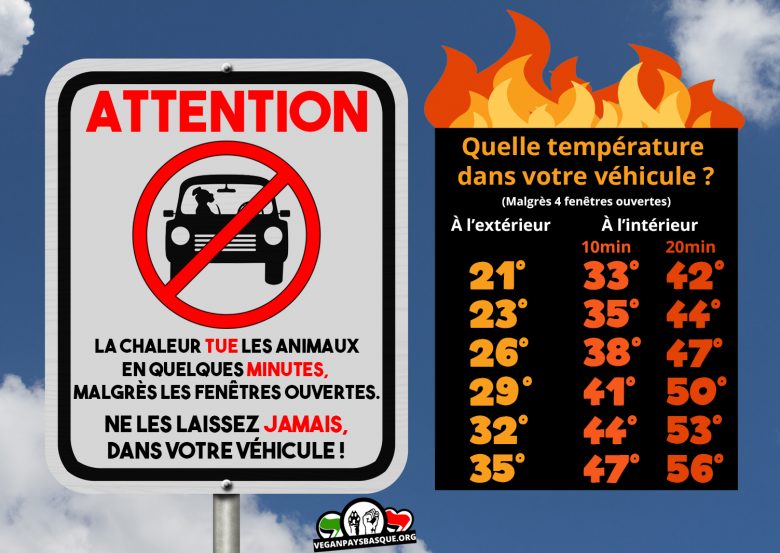
Never leave your child or pet alone in the car. They are at risk of heat stroke and even death.
The first signs are increased heart rate, panting, agitation or apathy.
The temperature in the cabin is a death trap, so you can’t leave your children, dogs (or cats) alone, even for a short while, even if you leave the windows open.
What to do when you see an animal in a car?
Can you break a car window to save a dying dog?
Dog protection : When you find a dog in a car in danger of overheating, don’t hesitate, act.
If the owner is not nearby and cannot be located quickly, notify the police or gendarmerie as soon as possible.
If time is of the essence and you can prove that the animal is in imminent danger of death, you can break a window in an attempt to save the dog (but follow this sound advice before doing so to prove your good faith in not wanting to damage the vehicle).
NOTE: To protect yourself from a claim for damage to another person’s property, several conditions are necessary, which are detailed on
the website of the Ministry of the Interior:
In summer, the temperature in a car’s interior can reach and exceed 40°C in less than ten minutes. In a heat wave, the mercury can rise to around 60° in just fifteen minutes. This can be fatal for the animal if it becomes trapped.
How do you react when you find an animal locked in a vehicle?
Try to notify the owner first.
If you cannot find it, quickly call the local police or gendarmerie. Indeed, Article 20 of the law of 6 January 1999 [codified in Article 214-23 (3°) of the Rural Code  allows you, when the animal locked in a vehicle is in danger, to open the vehicle parked in direct sunlight in the presence of a gendarme or police officer.
allows you, when the animal locked in a vehicle is in danger, to open the vehicle parked in direct sunlight in the presence of a gendarme or police officer.
If you feel the situation is urgent and you cannot wait for help, you may decide to break a window to rescue the animal in distress. It is advisable to have at least two witnesses who can attest to the good faith if an action by the car owner is subsequently brought.
However, this is a difficult decision to make, as the owner could sue for damage to another person’s property ( Article 322-1 of the Penal Code  ). However, if it is obvious that the life of the animal in the vehicle is threatened (unconsciousness, frantic panting, dark tongue, abnormally agitated behaviour, etc.), the law protects you ( Article 122-7 of the Penal Code
). However, if it is obvious that the life of the animal in the vehicle is threatened (unconsciousness, frantic panting, dark tongue, abnormally agitated behaviour, etc.), the law protects you ( Article 122-7 of the Penal Code  ). This article specifies that “a person is not criminally liable if, in the face of actual or imminent danger to himself, another person or property, he performs an act necessary to safeguard the person or property”.
). This article specifies that “a person is not criminally liable if, in the face of actual or imminent danger to himself, another person or property, he performs an act necessary to safeguard the person or property”.
After the evacuation of an animal locked in a vehicle: what to do?
Place the animal in the shade, cool it with tempered water and of course give it something to drink, but in small quantities and always with tempered water. A visit to the vet is recommended when the dog seems to have recovered.
Whatever you decide, always remember to notify law enforcement if you see that the animal in the vehicle is in danger. In an emergency, call 17. If the emergency is over, you can contact the nearest police station or gendarmerie brigade.
Animal abuse: facts and penalties
Every animal is a sentient being and must be placed by its owner in conditions compatible with the biological requirements of its species. It is prohibited to mistreat a domestic animal, a tamed wild animal or an animal held in captivity.
Any person who breeds, keeps or possesses an animal and does not comply with these obligations is liable to a fine of 750 euros. A person who intentionally, unnecessarily, publicly or otherwise mistreats an animal is also liable to a fine of 750 euros.
The court may also decide to entrust the animal permanently to a foundation or an animal protection association.
Please note: a minor under the age of 17 cannot acquire a pet without the consent of his/her parents or guardians.
30 Million Friends
Avoid walking your dog on asphalt, moisten its kibble, and don’t hesitate to cool it down… 7 tips from the 30 Millions d’Amis foundation to protect your dog from the heat.
To be continued
Why vaccinate your loulou? – A few diseases – Find out more about different parenting methods – and much more

